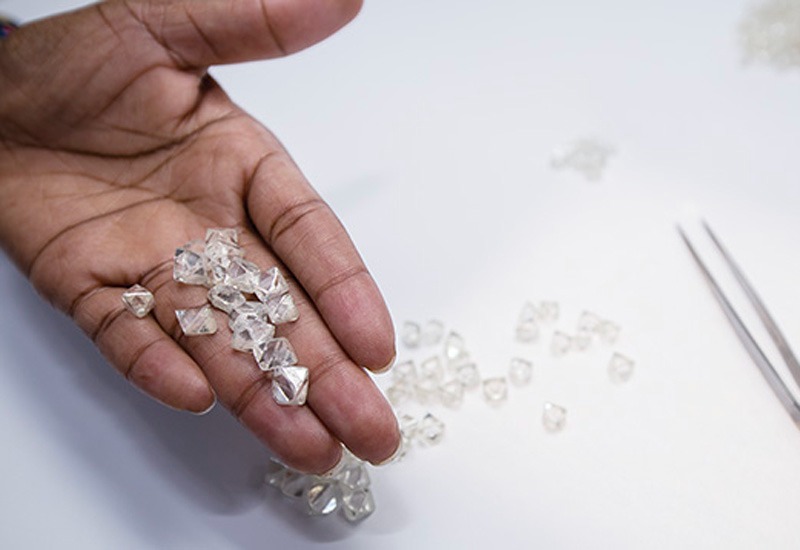
Namibia’s rough diamond export earnings fell sharply in the first quarter of 2025, dropping by 54.8% from the previous quarter and 14.3% year-on-year to N$1.7 billion, according to data released by the Bank of Namibia.
The decline is attributed to a slump in both export volumes and prices, with demand remaining subdued in key markets such as China and the United States.
The central bank pointed to a range of factors behind the downturn, including increased competition from lab-grown diamonds, oversupply concerns from Angola, and rising inventory levels within the midstream sector.
“The downturn reflects a significant fall in both volumes exported and realised prices. This was mainly underpinned by prolonged periods of lower demand particularly in key markets such as China and the US, increased competition from lab-grown diamonds and rising concerns over potential oversupply of Angolan diamonds in the global market, further exacerbated by elevated inventory levels in the midstream sector,” the Bank of Namibia said.
Despite the sharp fall in export revenue, diamond production rose by 7.3% from the previous quarter to 631,749 carats.
This increase was driven by the planned mining of higher-grade ore and the return of two large recovery vessels to operation. On a year-on-year basis, however, production edged down by 0.6%.
“The increase stemmed from the recommissioning of two bigger recovery mining vessels during the fourth quarter through to the first quarter of 2025. However, on an annual basis production remains low amidst the continued low global demand for diamonds particularly from China, coupled with the threat from lab-grown diamonds,” the bank noted.
Globally, the diamond industry continued to face headwinds. Polished diamond prices declined further, with the Zimnisky Polished Diamond Index falling by 22.4% year-on-year to 75 points. The central bank attributed the drop to shifting consumer preferences, particularly in the US and India, where synthetic diamonds are gaining market share.
“The Zimnisky polished diamond contraction in the first quarter of 2025 stemmed from shifting consumer preferences towards lab-grown diamonds, especially in the US, where consumers started purchasing more lab-grown,” the bank stated.
India’s diamond cutting and polishing sector has also turned increasingly towards synthetic stones, in a move aimed at protecting jobs amid falling demand for natural diamonds. At the same time, import tariffs imposed under former US President Donald Trump’s administration added further strain on prices.
“Recent tariffs introduced by President Trump’s administration have resulted in an additional 10 percent decline in diamond prices,” the Bank of Namibia said, adding that these factors have contributed to a build-up of unsold stock in the midstream segment of the global diamond market.







